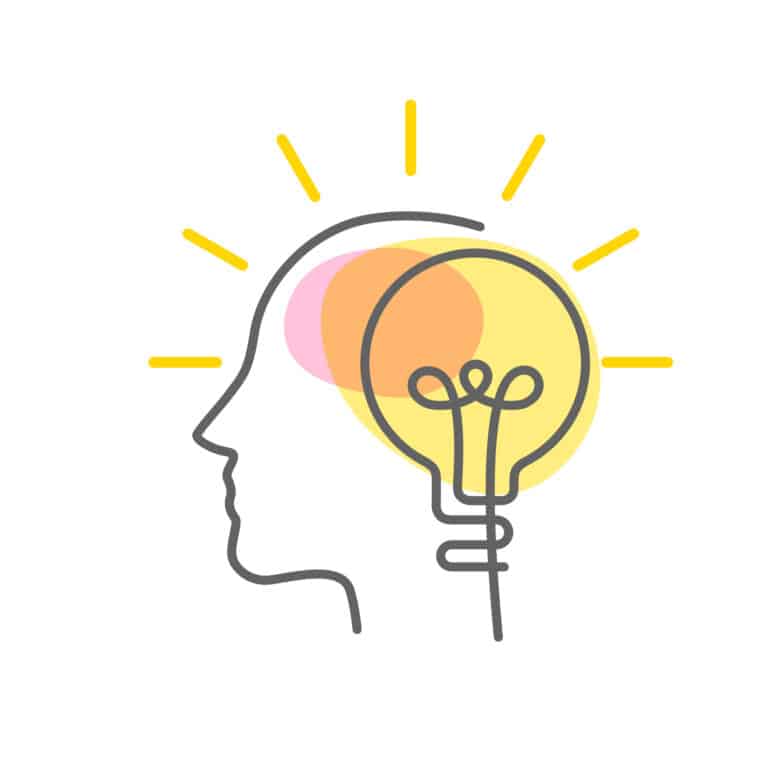Les contributeurs incluent : Programmes familiaux Casey, FosterClub, Fondation Annie E. Casey et Fondation William T. Grant

Les responsables et le personnel des organismes de protection de l'enfance sont constamment sollicités pour optimiser leurs ressources financières et humaines limitées. Ils y parviennent souvent en s'appuyant sur les meilleures recherches disponibles en matière de politiques et de programmes.
Les participants à la Programme national de recherche pour un système de bien-être de l'enfant et de la famille au XXIe siècle (Research Agenda), une initiative menée par plusieurs fondations philanthropiques, a commencé à suivre les recherches visant à combler ces lacunes et a découvert un problème urgent : même lorsque les résultats de recherche existent, ils sont souvent sous-utilisés en pratique. Face à ce problème, l'organisation s'est associée à l'American Public Human Services Association (APHSA) et à d'autres organisations nationales afin de mieux faire connaître des stratégies efficaces et concrètes pour optimiser l'utilisation des résultats de la recherche. Après avoir examiné plus de 2 000 articles et rapports, nous avons identifié dix stratégies réalisables renforcer l’utilisation de la recherche dans :
- Aider les futures générations de savoir.
- Améliorer la responsabilisation (par exemple, mesures de performance, évaluation d’impact et rapports obligatoires des organismes de recherche).
- Informer les actions, les décisions et les changements de pensée pour guider une compréhension réaliste des raisons pour lesquelles le problème existe ou de ce qui le cause (la recherche sur l’utilisation des conseils peut éclairer cet aspect).
- Orienter l’application de la recherche pour aider à résoudre un problème ou à mieux comprendre un défi à relever (Kim et al., 2018).
Sans garanties adéquates, les applications de la recherche peuvent être préjudiciables, notamment par leur cadrage, leurs rapports partiels et la manipulation des données. Malgré ces obstacles et d'autres, les responsables et les praticiens de la protection de l'enfance sont très motivés à fournir des services de haute qualité, et l'utilisation de la recherche en fait partie.
Les stratégies ci-dessous constituent une tentative visant à faciliter l’intégration de l’expertise en recherche professionnelle et des conseils de personnes ayant une expérience vécue afin d’améliorer la manière dont les services sociaux soutiennent les enfants et les familles.
Stratégies pour maximiser l'utilisation des résultats de la recherche
Jusqu'à récemment, il existait relativement peu de directives sur la manière de synthétiser de grandes quantités d'informations souvent disparates, et sur la manière dont ce processus pouvait différer pour les décideurs politiques et les autres parties prenantes. Dans le cadre d'un nouveau article de journal nous avons organisé dix stratégies en trois grandes catégories :
Accroître la pertinence de la recherche

- Intégrer les perspectives des résidents de la communauté et des personnes ayant une expertise vécue pour co-concevoir, donner du sens et diffuser la recherche. La recherche est plus susceptible d'être utilisée pour éclairer le changement lorsqu'elle aborde des questions pertinentes et urgentes pour les communautés locales, notamment les décideurs politiques et les autres acteurs qui contrôlent le financement et la conception des programmes. Ainsi, un partenariat recherche-pratique (PRP) permet une collaboration entre ceux qui utilisent la recherche et ceux qui la mènent, dans le but de produire des données probantes plus largement utilisées et exploitées.Doucet, 2019).
- Comprendre les points de vue des décideurs politiques et des praticiens qui sont touchés par la recherche. Impliquer les décideurs politiques tout au long du processus de recherche, de la définition du problème à sa mise en œuvre, renforce le soutien. Cette approche collaborative garantit que la recherche s'aligne sur les priorités et les objectifs des personnes concernées, augmentant ainsi les chances de réussite de sa mise en œuvre (Davies et Nutley, 2008).
- Utiliser un mélange de preuves mondiales et locales. Ce qui peut être important, ce sont les points de vue des membres des communautés locales (informations qualitatives), les données des États ou des États voisins. En revanche, un décideur fédéral pourrait s'intéresser davantage à la recherche mondiale portant sur de nombreuses communautés (informations quantitatives). Il est crucial de comprendre quels types de données trouvent le plus d'écho auprès des décideurs.
- Tirer parti des fenêtres politiques et de la dynamique politique pour mener des recherches opportunes, pertinentes pour le système et axées sur l’amélioration. Bien que certains types de politique puissent entraîner la suppression de données et d’informations fondées sur la recherche (Lauronen, 2022), les désaccords politiques peuvent parfois être réglés efficacement en mettant sur la table des données de recherche pertinentes au bon moment (Tseng, 2012).
- Désagréger les données pour comprendre et traiter la manière dont les populations prioritaires sont affectées différemment. Reconnaître les disparités et œuvrer activement à leur élimination est essentiel pour créer un système de protection de l'enfance juste et efficace. La ventilation des données par localité et par caractéristiques démographiques peut aider les décideurs à garantir l'équité en identifiant les populations les plus démunies.
Accroître la capacité organisationnelle à utiliser la recherche
- Intégrer la recherche dans le cadre de l’apprentissage stratégique organisationnel. Les organisations ont besoin de données et de résultats de recherche pour évoluer et prospérer : “ L’apprentissage stratégique se produit lorsque les organisations ou les groupes utilisent l’évaluation et la pensée évaluative pour apprendre en temps réel et adapter leurs stratégies aux circonstances changeantes qui les entourent. ” L’apprentissage organisationnel est accru lorsque les systèmes d’amélioration continue de la qualité génèrent des données de recherche concrètes qui intègrent le contexte du monde réel afin de fournir une base solide pour la conception et la pérennisation de nouveaux programmes.
- Tirer parti de la science de la mise en œuvre et des stratégies de changement des systèmes pour garantir que les résultats de la recherche sont utilisés. La cohérence et l’efficacité des services de protection de l’enfance aux États-Unis ont été en partie freinées par la faible intensification des pratiques fondées sur des données probantes, y compris les interventions qui ont été reconnues comme efficaces par des personnes culturellement compétentes. preuves basées sur la communauté (Écho Hawk, 2018; Hutchful, 2024; Bison blanc, 2001).
- Identifier et engager des champions et des agents de changement pour créer des opportunités de définition conjointe des problèmes et d’examen des recherches pertinentes. Parce que les barrières politiques et la dynamique des systèmes peuvent bloquer ou retarder les changements nécessaires, le secteur a besoin de champions, d'agents du changement et d'autres types de défenseurs. Un agent du changement est une personne qui influence l'innovation au sein d'une organisation. Un champion ou un agent du changement peut être un décideur politique, un professionnel de la santé, un travailleur de première ligne, un dirigeant local ou un ou plusieurs membres de la population visée (Jaramillo et al., 2023 ; Roberts et al., 2017).
Améliorer l'accessibilité de la recherche

- Utiliser les relations organisationnelles, les intermédiaires et d’autres soutiens pour élargir l’accès aux données de recherche et leur compréhension. Les décideurs apprécient également souvent de collaborer avec des organisations intermédiaires de confiance, capables de les aider à interpréter la recherche et à l'appliquer au contexte local, comme les prestataires d'assistance technique. Il s'agit d'organisations et/ou de personnes qui peuvent contribuer à (a) l'identification, l'adoption et la mise en œuvre de pratiques exemplaires fondées sur des données probantes ; (b) la recherche, l'évaluation et l'assurance qualité des services nouveaux et existants ; (c) l'éducation et la sensibilisation du public aux pratiques exemplaires fondées sur des données probantes ; et (d) le développement d'infrastructures, de systèmes et de mécanismes de mise en œuvre (Allison Metz, communication personnelle, 5 février 2017).
- Rendre la recherche accessible en créant des produits de connaissances conviviaux, notamment en faisant appel à des centres d’échange de recherche pour aider à synthétiser et à diffuser les résultats de recherche en temps opportun. La recherche doit être utilisée et démontrée selon une méthode conviviale qui permet de comprendre la recherche à tous les niveaux, quel que soit le niveau d’éducation de l’utilisateur.
Le Conseil national de recherche des Académies nationales des sciences, la Fondation William T. Grant et d’autres ont investi des ressources importantes dans le développement de stratégies d’utilisation de la recherche. DuMont (2024), en expliquant certaines des dynamiques clés, met en évidence quatre actions :
- Premièrement, les stratégies visant à améliorer l’utilisation des données de recherche doivent intégrer ce que nous savons déjà à partir d’études qui mettent en lumière conditions qui favorisent l'utilisation des idées et des résultats de la recherche (Bogenschneider, 2021; Cooke et al., 2023; DuMont, 2015; Dunn et al., 2023; Gitomer et Crouse, 2019; Tseng, 2022).
- Deuxièmement, les stratégies visant à améliorer l’utilisation des données de recherche doivent tenir compte des contexte opérationnel, c'est-à-dire concevoir des approches qui naviguent, exploitent et compensent les capacités, les routines, les acteurs, les ressources et les politiques existants qui affectent un système (Chorpita et Daleiden, 2014; Chuang et al., 2023; Coburn et al., 2020; Crowley et al., 2021b; Doucet, 2021; Farrell et al., 2018; Gándara et al., 2017; Metz et al., 2022; Neal et Neal, 2019; Ozer et al., 2020; Scott et al., 2017; Shirrell et al., 2023; Weber et al., 2023).
- Troisièmement, les stratégies visant à améliorer l’utilisation des données de recherche doivent tenir compte de les conditions sous-jacentes qui affectent les idées de recherche financées, la manière dont la recherche est menée, les personnes qui la mènent, les hypothèses qui sous-tendent l'appel à propositions et les questions de recherche, et les personnes susceptibles de bénéficier ou d'être lésées si la recherche est utilisée (Chicago au-delà, 2019; Doucet, 2019; DuMont, 2024a; Jackson et al., 2024; Kirkland, 2019; Michener, 2019; Miranda-Samuels, 2022; Gallois, 2023).
- Quatrièmement, au-delà de la prise en compte des contextes et des conditions susmentionnés, les chercheurs, les défenseurs et les communicateurs doivent également respecter les multiples formes de preuves et d’expertise nécessaires pour fournir des informations conséquentes sur la manière dont tous Les enfants, les familles et les communautés peuvent s'épanouir. Cette perspective plus globale permettra de développer des stratégies améliorant l'utilisation de la recherche.
Comment la protection de l'enfance Praticiens Peut consulter et utiliser la recherche
Une étude récente portant sur 86 revues systématiques de stratégies visant à accroître l'utilisation de la recherche dans la pratique clinique des soins de santé a souligné la nécessité de s'éloigner des interventions individuelles et multidimensionnelles isolées. Les praticiens doivent plutôt mieux comprendre et développer une capacité plus contextualisée, relationnelle et organisationnelle pour soutenir l'utilisation de la recherche en pratique clinique (Boaz et al., 2024). Cela implique de s'appuyer sur un éventail plus large de perspectives de recherche et de diversifier les types de synthèse utilisés pour explorer le contexte réel dans lequel les nouvelles stratégies cliniques seront mises en œuvre. L'engagement communautaire n'est ni simple ni facile pour la plupart des chercheurs.
Enfin, les responsables et le personnel des organismes de protection de l'enfance devraient avoir des attentes réalistes quant aux effets directs et immédiats de la recherche sur les politiques. Les décisions politiques sont souvent prises en plusieurs étapes disjointes. Par conséquent, rechercher un impact majeur à partir des résultats de la recherche revient à méconnaître la nature même de l'élaboration des politiques. Si certaines ou la totalité des dix stratégies sont utilisées, davantage de décideurs, d'administrateurs et de praticiens de la protection de l'enfance pourront exploiter les résultats de la recherche en favorisant une approche holistique. Dans le cadre de cette approche plus globale, les chercheurs devraient créer et entretenir de solides partenariats entre la communauté et le milieu universitaire, qui permettront des recherches plus rapides. Cela s'ajoute à une responsabilisation et une équité accrues entre les partenaires grâce à une collaboration continue et authentique.
Consultez les références citées dans cet article ici.
À propos des auteurs

Vice-président principal des programmes à la Fondation William T. Grant

Chercheur en santé mentale et systèmes de protection de l'enfance

Consultant en recherche/évaluation

Directeur général, Services de recherche chez Casey Family Programs

Associé principal, groupe de pratique de la Fondation Annie E. Casey
Partagez cet article sur vos comptes de réseaux sociaux: